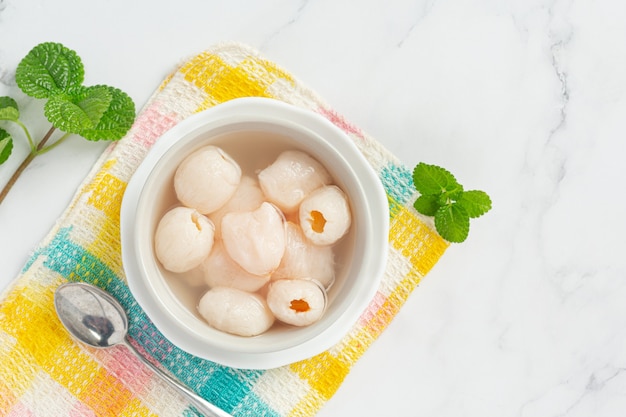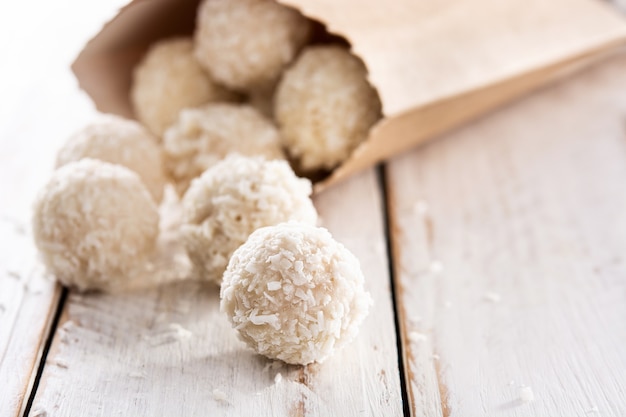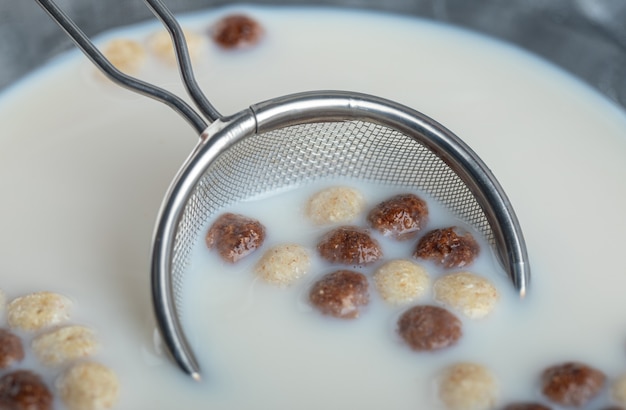(Part 1) Unveiling the Magic of tapioca pearls

A World of Boba Pearls
You might be surprised to learn that tapioca pearls aren't just one size fits all! They come in a variety of sizes, colours, and even flavours. Here's a quick rundown:- Small White Pearls: These are the classic, traditional boba pearls. They have a nice chewiness and don't overpower the flavour of your drink.
- Large Pearls: These are great for those who love a bit more of a chew. They're also visually appealing and can add a unique texture to your drink.
- Black Pearls: These are simply white pearls that have been dyed with natural food colouring. They add a touch of colour and drama to your boba tea.
- Brown Sugar Pearls: These pearls are infused with a sweet, rich brown sugar flavour. They're perfect for those who love a little extra sweetness in their drink.
Exploring the Texture
The texture of tapioca pearls is what truly makes boba tea special. It's that perfect balance of chewy and soft, giving you a satisfying bite with every sip. You want them to have a slight resistance when you chew, but they should also melt in your mouth a little.This is where the cooking process comes in. It's an art form, and I'll guide you through it step-by-step, ensuring you achieve that perfect boba texture.
(Part 2) Choosing the Right Pearls: A Boba Connoisseur's Guide

Tips for Selecting Perfect Pearls:
- Check the Packaging: Always look for tapioca pearls that are packaged in airtight bags to prevent them from drying out. Check the expiration date too! You want fresh pearls for the best results.
- Read Reviews: If you're buying tapioca pearls online, make sure to check out the reviews from other boba lovers. They can provide valuable insights into the quality of the pearls.
- Visit a Specialist Store: If you're lucky enough to have an Asian grocery store nearby, they'll often have a wider selection of tapioca pearls than your local supermarket.
- Ask for Recommendations: Don't be afraid to ask the store staff for their recommendations. They're usually a good source of information about tapioca pearls. They might even have some insider tips!
(Part 3) Mastering the Art of Cooking Tapioca Pearls

Step 1: Preparing the Pearls
First things first: give those pearls a good rinse under cold water. This will remove any excess starch and prevent them from sticking together during cooking. Imagine a nice, smooth, non-sticky boba texture – that's what we're aiming for!Step 2: Boiling the Pearls
Next, fill a saucepan with plenty of water and bring it to a rolling boil. Once the water is bubbling vigorously, add the tapioca pearls. Stir gently to prevent them from sticking to the bottom of the pan.Step 3: The Waiting Game
Now comes the crucial part: the waiting game. The exact cooking time for tapioca pearls can vary depending on the brand and size. As a general rule, it's best to cook them for about 15-20 minutes, or until they're translucent and have a slight chewiness.This is where your eyes and your intuition come in. Watch closely for the pearls to become translucent. Don't worry if they seem slightly cloudy at first – they'll clear up as they cook.
Step 4: The ice bath
Once the pearls are cooked, it's time for a cold shower! Drain the hot water and immediately plunge the pearls into a bowl of ice water. This will stop the cooking process and ensure that they have a nice, chewy texture.Pro Tips for Perfect Pearls:
- Salt It Up: A pinch of salt added to the boiling water can help to prevent the pearls from sticking together. It's a little trick that can make a big difference.
- Don't Overcrowd the Pot: Make sure you have enough space for the pearls to move around freely in the boiling water. Overcrowding can lead to uneven cooking and sticky pearls.
(Part 4) Avoiding Common Boba Mistakes
We've all been there. You're excited to make your own boba tea, but then disaster strikes. The pearls are too hard, too soft, or stuck together. Don't worry, I've been there too! Here are some common mistakes to avoid:Mistake 1: Overcooked Pearls
It's easy to get carried away and overcook the pearls. This can leave them hard and rubbery, not the delicious chewy texture we're aiming for. Remember, it's better to err on the side of undercooked pearls. You can always cook them for an additional minute or two if needed.Mistake 2: Not Using Enough Water
Make sure you're using enough water to cook the pearls properly. If you don't have enough water, the pearls will stick together and won't cook evenly. Aim for a ratio of about 1:10 pearls to water.Mistake 3: Skipping the Rinse
Don't skip the rinsing step! It's essential for removing excess starch and preventing those pesky sticky pearls.(Part 5) The Secret to Perfect Boba Texture: A Guide to Chewy Bliss
Okay, so we've talked about the cooking process, but how do you achieve that perfect boba texture? It's all about finding that magical balance between chewy and soft. You want the pearls to have a slight resistance when you bite into them, but they should also melt in your mouth a little bit.Tips for Achieving the Perfect Texture:
- Don't Overcook: This might seem obvious, but it's crucial! Watch those pearls carefully and take them off the heat when they're just about translucent.
- Embrace the Ice Bath: The ice bath is your best friend when it comes to perfect boba texture. It stops the cooking process and ensures those pearls have that delightful chewiness.
- Store Them Right: Once the pearls are cooked, you can store them in the fridge for a few days. Just make sure to rinse them and drain them well before storing. This will help to prevent them from sticking together.
(Part 6) The Boba Sweet Spot: Finding Your Flavor Profile
Now that we've covered the basics of cooking perfect boba pearls, let's dive into the fun part – flavor! The beauty of boba tea is that it can be customized to your taste. Some people prefer it super sweet, while others like it more subtle.Building the Base
The base of your boba tea is often a black or green tea, but you can also use milk tea, coffee, or even fruit juices. You can add a sweetener of your choice, like sugar, honey, or syrup.The Toppings That Make It Special
This is where you can really get creative and unleash your inner boba artist! You can add all sorts of toppings to your boba tea, like:- Puddings: Taro, mango, or red bean pudding add a creamy and delicious element to your drink.
- Jelly: Coconut jelly, grass jelly, or aloe vera jelly add a refreshing and chewy texture.
- popping boba: These little spheres burst with fruity flavors when you bite into them – a delightful surprise for your taste buds!
- Whipped Cream: For a touch of decadence, top your boba tea with whipped cream.
- Fresh Fruit: Add a few slices of your favourite fruit for a refreshing and flavorful twist.
(Part 7) Getting Creative with Boba: Unlock Your Inner Boba Artist
Once you've mastered the basics, it's time to unleash your creativity! Experiment with different flavors, toppings, and combinations to discover your perfect boba tea.Here are a few ideas to get you started:
- Fruity Boba: Blend your favourite fruit with ice and add a touch of sweetener. Then, pour the mixture over cooked boba pearls. Mango, strawberry, and pineapple are all excellent choices.
- Coffee Boba: Brew a strong cup of coffee and add milk, sweetener, and cooked boba pearls for a caffeine kick with a chewy twist.
- Chocolate Boba: Mix chocolate syrup with milk or even ice cream, and add those delicious tapioca pearls for a decadent treat.
- Matcha Boba: Whisk together matcha powder, milk, and sweetener for a refreshing and slightly earthy drink.
- Taro Boba: Combine taro powder, milk, and sweetener for a sweet and creamy treat. It's a popular choice for its unique flavour and vibrant purple hue.
(Part 8) Boba Tea: A Global Phenomenon
Boba tea has become a global phenomenon, and it's easy to see why. It's a refreshing, customizable drink that's perfect for any occasion. From casual hangouts with friends to celebratory gatherings, boba tea brings people together.The Origins of Boba Tea
Boba tea originated in Taiwan in the 1980s. The exact story of its creation is a bit of a mystery, but one popular legend claims that a tea shop owner was inspired by the chewy tapioca pearls used in traditional Taiwanese desserts.The Boba Tea Revolution
Since its humble beginnings in Taiwan, boba tea has spread like wildfire, conquering the world one chewy pearl at a time. It's become a staple in many cultures, and there are now countless boba tea shops around the globe.(Part 9) The Boba Community: Connecting Through a Shared LoveOne of the things I love most about boba tea is the passionate and welcoming community surrounding it. People from all over the world are united by their love for this delicious drink.Join the Conversation
There are many online communities dedicated to boba tea, where you can ask questions, share your experiences, and get inspiration for new recipes. You can find these communities on social media platforms like Facebook, Instagram, and Reddit.Follow Boba Influencers
There are also numerous boba bloggers and influencers who share their love for boba tea through blogs, Instagram, and other social media platforms. Follow their accounts for tips, reviews, new drink ideas, and exciting boba adventures.Visit Local Boba Shops
Take a trip to your local boba shop and strike up a conversation with the staff or other boba enthusiasts. They're a great source of information about the local boba scene, and you might even discover a new favourite drink!(Part 10) The Boba Journey Continues
My journey into the world of boba tea has been a delicious adventure, and it's far from over. I'm always on the lookout for new flavors, toppings, and boba tea shops to explore. The possibilities seem endless! Join the Boba Revolution
Grab some tapioca pearls, unleash your creativity, and embark on your own boba journey. The world of boba is waiting to be explored! FAQs
1. What are tapioca pearls made of?
Tapioca pearls are made from tapioca starch, which is extracted from cassava root. They are gluten-free and naturally vegan.
2. How long do cooked tapioca pearls last in the fridge?
Cooked tapioca pearls can be stored in the fridge for up to 3 days. Make sure to rinse them thoroughly and drain them well before storing.
3. Can I use frozen tapioca pearls?
You can use frozen tapioca pearls, but you'll need to thaw them completely before cooking. However, fresh pearls are generally better as they have a better texture.
4. What are some good toppings for boba tea?
Popular toppings for boba tea include puddings, jellies, popping boba, whipped cream, and fresh fruit.
5. How can I make my own boba tea syrup?
To make your own boba tea syrup, you can combine water, sugar, and your favourite flavoring. For example, you could use vanilla extract, fruit juice, or even spices. You can adjust the sweetness to your preference.
I hope this guide has inspired you to embrace the world of boba tea and create your own delicious and satisfying drinks. Happy bobbing!
Everyone is watching

Corn on the Cob: The Ultimate Guide to Perfectly Cooked Ears
Healthy MealsAh, corn on the cob. Just the name evokes images of sunny days, barbecues, and that sweet, juicy flavour that ...

Perfect Pork Roast Oven Cooking Time: A Guide to Delicious Results
Healthy MealsThere's something truly satisfying about a perfectly roasted pork. The aroma alone is enough to make your mout...

Ham Cooking Time: How Long to Bake, Smoke, or Boil a Delicious Ham
Healthy MealsAh, ham. It's a classic, isn't it? A real crowd-pleaser, especially around holidays. And when done right, it'...

Scallops: The Ultimate Guide to Perfect Cooking
Healthy MealsAh, scallops. Those delicate, sweet, and utterly delicious morsels of the sea. They hold a special place in my...

Spaghetti Squash: The Ultimate Guide to Cooking and Serving
Healthy MealsRemember that time you saw spaghetti squash at the supermarket, looking all bumpy and strange, and thought, "W...
